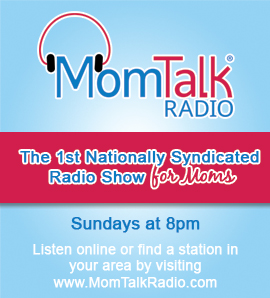In a recent conversation with fellow runners of the Disney Princess Half Marathon, (and after hearing the amazing Jeff Galloway talk about tips for running and avoiding injury), I foolishly admitted that I had escaped any truly serious injury over the course of the last few years, thousands of miles and 20+ marathons. In response from the running gods, of course I developed terrible pain in my foot that wouldn’t relent, regardless of days and even weeks of rest (i.e. no running!). Off to the doctor I went with what I was sure amounted to plantar fasciitis (I have had that) but turned out to be a broken bone in my foot! Luckily, the recuperation didn’t require a cast or boot, just flat shoes (easy to wear flip flops in Florida) and no running (not so easy).
Of course, as the doctor and I started talking about our careers, family and exercise, I thought of the many moms who might want to start an exercise routine but don’t know where to start. Because my doctor was so friendly and approachable, I asked her if she’d answer a few questions to share with my readers. So here is the Q & A from Dr. Sarah Gibson, of Meli Orthopedics in Fort Lauderdale.
1) What do moms need to consider first physically?
Being “physically fit” is often a misconstrued idea – many people, like runners, think only in terms of endurance, while others, like weight lifters think only in terms of strength. True physical fitness; however, blends a mix of endurance, strength and flexibility. There is also a difference between “general physical fitness” and “sport specific fitness,” which can be illustrated by the fact that a mother who has been a runner, may have some muscle soreness in her arms and shoulders after playing tennis if she has not been playing tennis regularly.
In general, everyone should aim for a total of at least 150 minutes of cardiovascular exercise per week. Also, as another general rule, women should aim to maintain a healthy body weight with a body mass index (BMI) between 18.5 and 25. The BMI takes height into account in calculating normal values for body weight and there are numerous sites on the internet that will calculate your BMI for free.
2) How important is stretching? It adds time to an already busy schedule for moms-
There is an on-going debate about stretching – whether to do it before or after you exercise, or whether to even do it at all. Scientific studies have yielded conflicting results, thus failing to lead to any kind of decisive conclusion on the matter, but many still advocate stretching as a way to improve flexibility, improve performance and decrease injury rates. Conversely, studies have been much more conclusive about the benefits of warming-up before exercising. Warm-up exercises should be done gradually and should focus on the main muscles and motions that your sport or activity will involve. Generally a warm-up of as little as 3-5 minutes can be beneficial and stretching can even be incorporated into this time.
3) How do I protect my knees or other body parts from injury?
Proper equipment and a gradual increase in intensity and duration of exercise are paramount to preventing injury. It is important to have new equipment fit by someone who is both knowledgeable and experienced with that type of equipment – whether it is the proper running shoes, the correct size handle on a tennis racquet or the right length of golf clubs – improper equipment will increase the risk of both traumatic and overuse injuries.
The longevity of various pieces of equipment varies as well, but is directly related to how often and how intensely a piece of equipment is used. In general, for running shoes – most are designed to provide good support and shock absorption for about 300-500 miles. High-level endurance runners may reach this milestone in a few months, while lower-mileage runners may take more than six months to achieve this. The cushioning materials in shoes deteriorates over time, regardless of mileage, so runners should get new shoes every 6 months or 300-500 miles – whichever comes first.
4) I feel a twinge of pain? How do I know if it’s just newness to the sport vs an injury?
Some muscle soreness is not uncommon, especially after a hard work out, but if there is a traumatic event, such as a fall, that results in significant swelling, pain and/or difficulty either weight-bearing or moving a joint, then you should be evaluated by a medical professional. Additionally, even without a traumatic injury – other things that should warrant medical evaluation include recurrent or worsening pain during physical activity, pain that persists at rest or pain that persists for longer than 5-7 days.
5) What if I get injured, then what?
If you are concerned about a broken bone, needing stitches, have any neurologic concerns (altered mental status, weakness or tingling in a limb etc.) or concerns about infection – then you should seek medical care immediately, usually through a hospital Emergency Department. If you simply have pain and/or swelling, then you can usually wait and see your primary care physician or sports medicine physician in clinic.
Sarah R. Gibson, MD specializes in the non-operative treatment of musculoskeletal and sports-related injuries at Meli Orthopedics in Fort Lauderdale. She is fellowship trained in sports medicine through multiple Harvard Medical School affiliated programs. She has served as a physician for the Boston Ballet, the Boston Marathon, Division I college hockey and basketball, the Women’s Olympic Marathon Trials and the Staples Champions Cup Tennis Tournament, among numerous other events.


